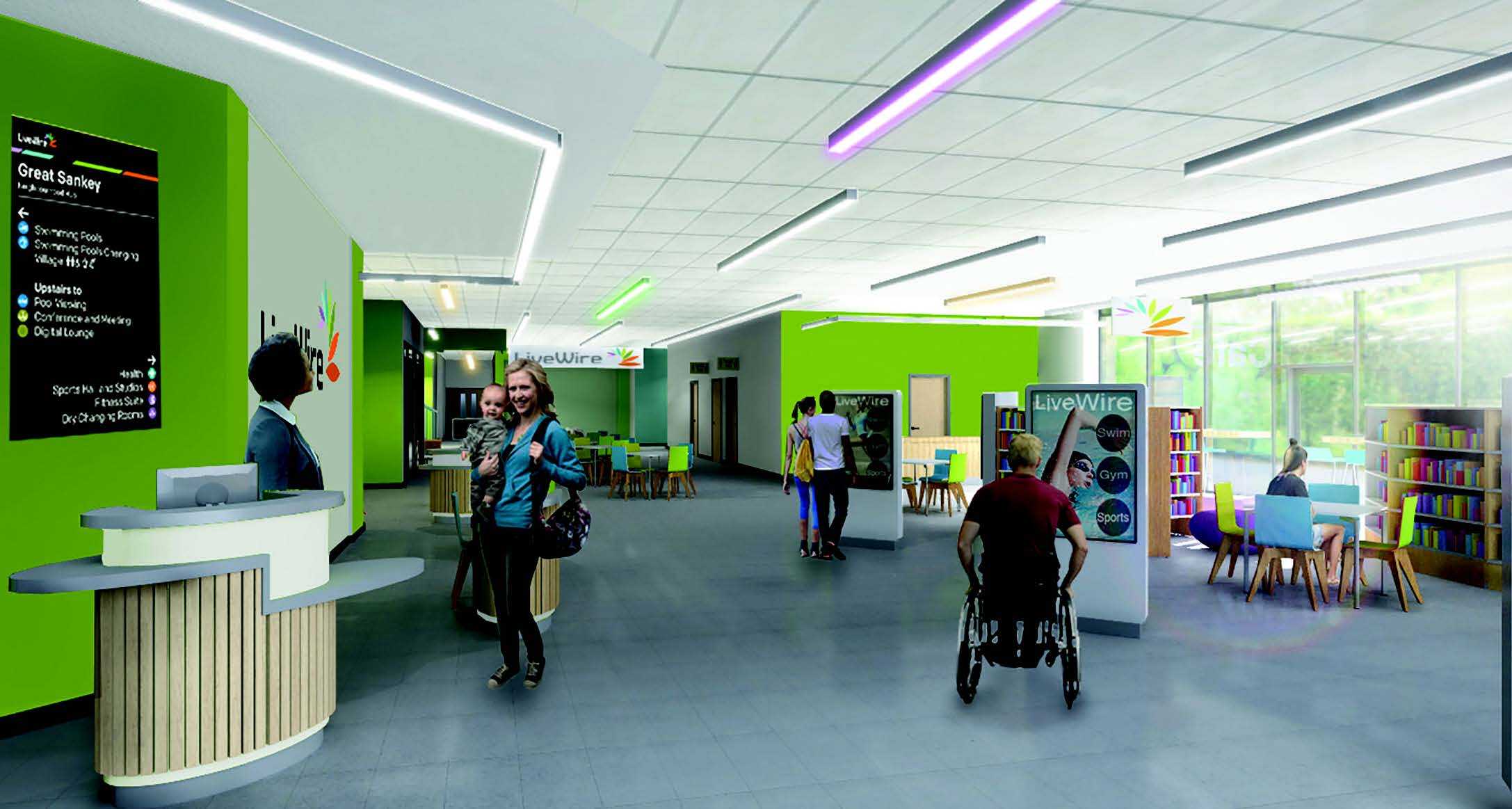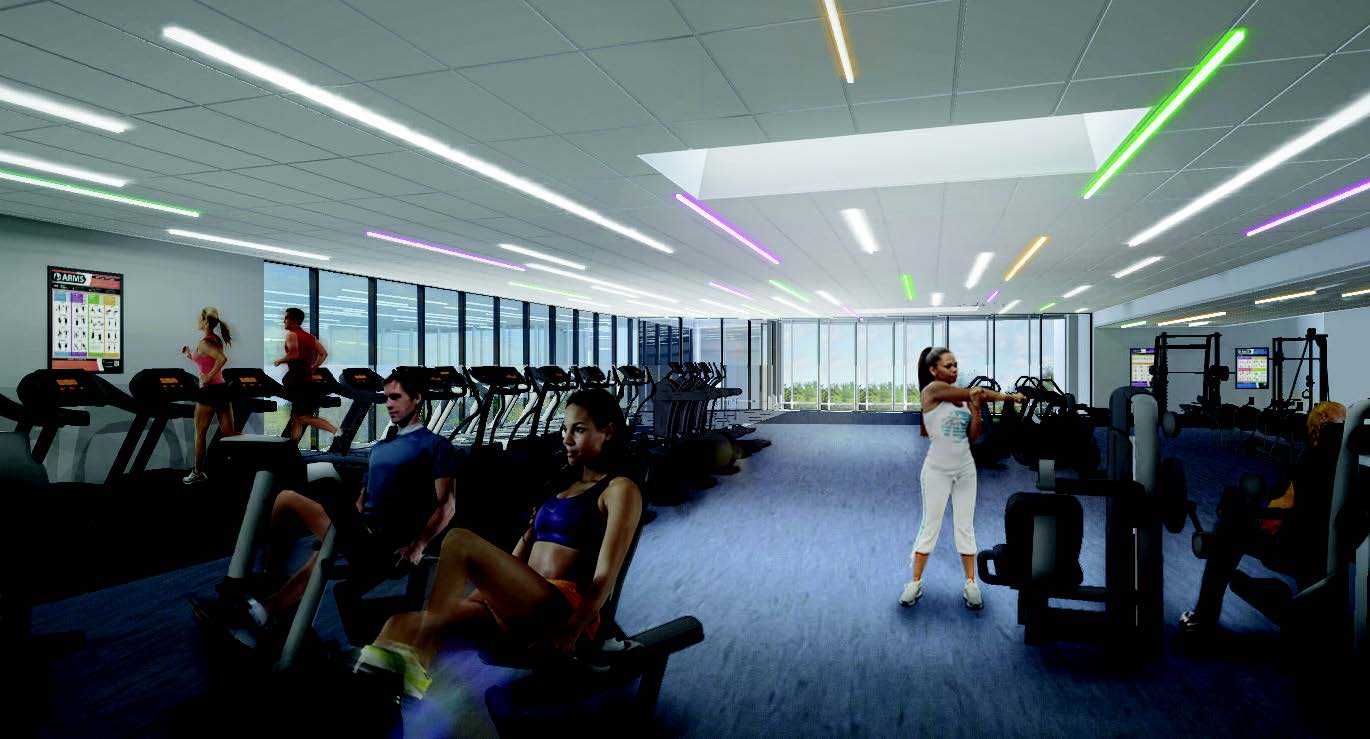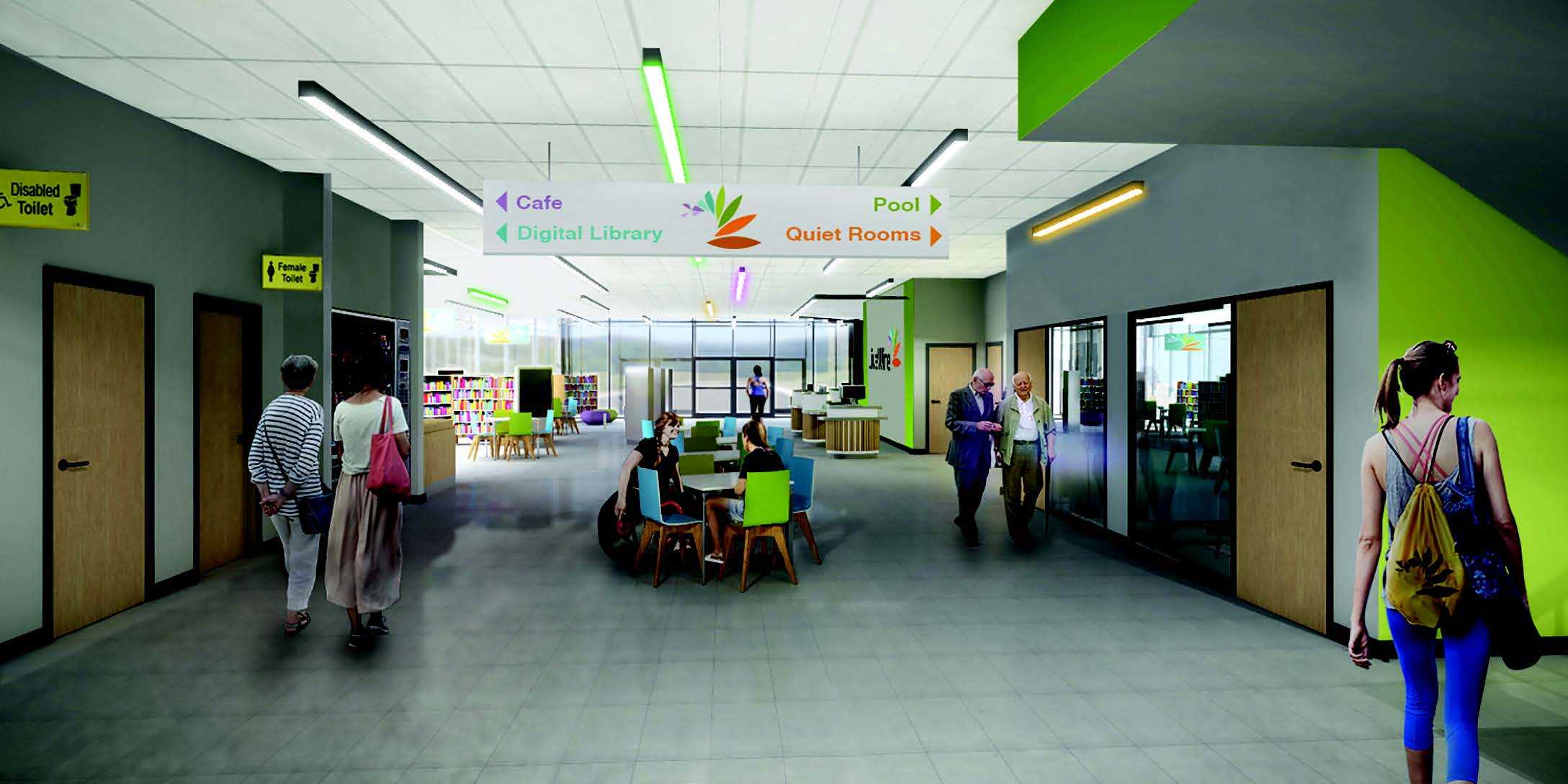
Set to open early this year, Great Sankey Integrated Neighbourhood Hub is believed to be one of the first public wellbeing buildings seeking Dementia Friendly accreditation.
The need
The centre has not kept pace with the demands of modern users. The residents and their demographic profile have changed since it was built there in the 1970s. “There are more young families than ever and a rapidly ageing population in Warrington, particularly in Great Sankey and Penketh,” says Locklynne Hall, business director at LiveWire.
To meet the needs of this changing population, LiveWire is creating a centre that is inclusive for all; one that can meet the demand for children's swimming lessons as well as being dementia friendly for the fastest ageing section of Warrington's population.
“All evidence suggests that dementia will become more prevalent and no known cure in sight. However people with dementia can still be physically active and physically well people. So we need facilities that allow for cognitive impairment.” says Hall.
Understanding the principles of dementia friendliness
LiveWire is working with Walker Simpson Architects and the University of Stirling, leaders in dementia-friendly design, on the £18m project. The sector is still in the early stages of dementia friendly design implementation, so the team began by attending lectures and tapping into the research and experience available from institutions such as the University of Stirling and Kings Fund.



In addition, John Walker, director of Walker Simpson Architects points out that “The internet provides access to a range of information including dementia simulation videos such as work by PK Bevil and the Alzheimers Society work with the Virtual Reality android app”.
As a design practice, Walker Simpson Architects’ team are Dementia Friends and promote dementia awareness at conferences and across client bodies and construction industry supply chains.
Working closely with the stakeholders from concept stage was key. Throughout the design process, there was close liaison with the Dementia Services Development Centre (DSDC) at the University of Stirling as well as seeking feedback to confirm essential and recommended criteria.
An integrated design approach from across the whole project team was also crucial.
So, what does dementia friendly mean in the context of leisure provision?
The following should be considered from the outset of a design explains Walker:
In its simplest form, dementia friendly design complements the principles of good public building design: clarity of form, orientation, wayfinding, accessibility, convenience, environmental considerations such as good levels of natural and artificial light, controlled acoustics, clear and maintained air quality and temperature.
A dementia friendly facility needn’t cost more
Consideration of dementia friendly design and specification in the early stages of a project can avoid costly interventions at later stages. It is beneficial for the whole project team to have an appreciation of dementia friendliness and active knowledge of dementia friendly best practice.
Dementia friendly spaces
Estate, staff and the services provided must all be dementia friendly:
Ageing generally affects the sensory experience of sight, hearing and temperature
Staff
There should be specialist training to raise awareness of the condition and the impact it has on the person and their surrounding network. There should be specialist classes and activities on offer for both those with dementia and early onset dementia.
Dementia friendly design in action at Great Sankey Neighbourhood Hub
Useable outdoor dementia friendly spaces
These are effectively wrapped around the hub at Great Sankey to create a series of places for recreation and activity as well as circulation paths, car parking and bicycle storage. These include a 3G pitch and tennis courts, a trim trail with outdoor rig, a fenced library terrace with seating directly off the entrance concourse (the best light and freshest air is outside), and access to an Historic England moat and nature area.
Internal accommodation
This comprises:
Integrated health and wellbeing
The concept of an Integrated Community Hub supports the government’s sport strategy, ‘Sporting Future: A New Strategy for an Active Nation’. This states it will “tackle head on the flatlining levels of sport participation and high levels of inactivity in this country. Through this strategy, government is redefining what success in sport means, with a new focus on five key outcomes: physical wellbeing, mental wellbeing, individual development, social and community development and economic development.”
The key challenge of the Great Sankey project has been to transform the “community offer” from a tired 70s leisure centre to a thriving integrated community hub, says Walker. The centre integrates sport with health and wellbeing facilities alongside cultural experiences linked to library, art and museum interests.
“The design had to meet varied needs with very different accommodation requirements, from swimming classes to performing arts as well as a place to grab a coffee with a friend and be introduced to new health and culture programmes. Other challenges included working on a live site with an adjoining school and a neighbouring nursery – all key stakeholders with individual needs and specific health and safety requirements.”
A pioneering centre
The centre is understood to be one of the first public wellbeing buildings seeking Dementia Friendly accreditation, which is awarded by the DSDC. It is also one of the first integrated hubs to support wellbeing and primary care prevention and public health programmes. There has been much interest from local authorities, leisure service providers, the NHS and frameworks.
The future
As the UK is forecast to experience a continuing trend towards an ageing population, the need for accessible, dementia friendly environments is likely to increase. We can expect to see more operators following LiveWire’s lead by designing and building facilities that acknowledge tomorrow’s challenge today.
PROJECT TEAM